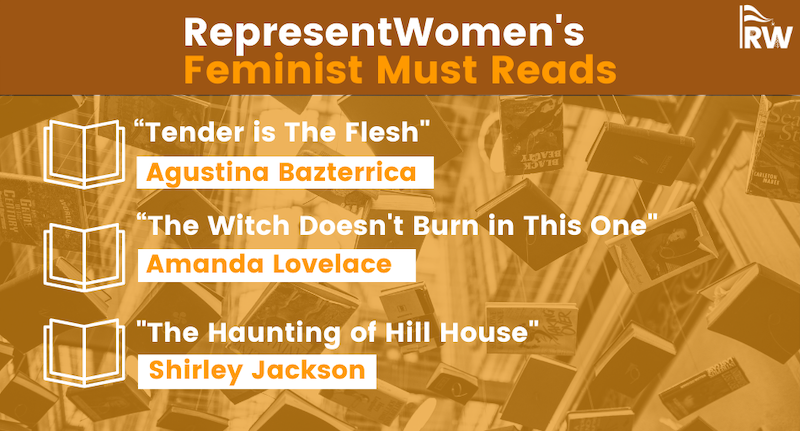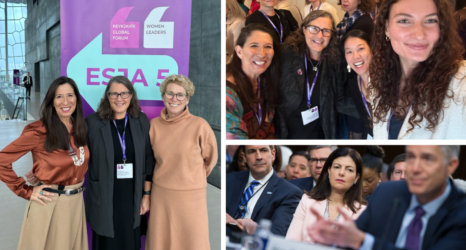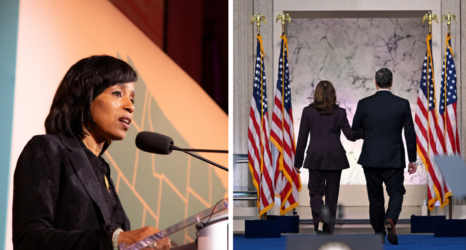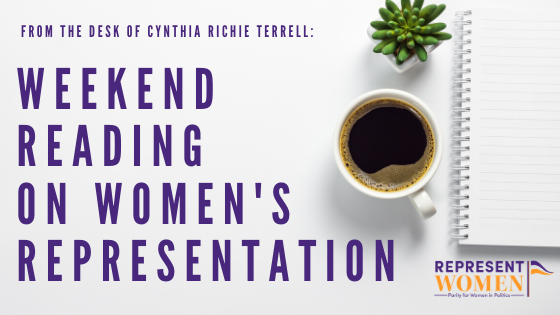
Weekend Reading on Women’s Representation is a compilation of stories about women’s representation in politics, on boards, in sports and entertainment, in judicial offices and in the private sector in the U.S. and around the world—with a little gardening and goodwill mixed in for refreshment!
Dear fans of gender balance in politics,
Women face steep barriers when running for executive offices in the United States so it is no surprise that of the 2,573 people who have served as governor in U.S. history only 45 have been women and only 9 women are currently in office. Liz Crampton wrote an interesting piece this week in Politico about efforts by both major parties to increase the number of women in statewide executive office:
The struggle across parties for women to rise to the top within states speaks to the inherent bias against women that persists in politics. Research shows that women have to be more likeable, raise more money and generally work harder than their male counterparts in order to win. That’s why both the Democratic and Republican parties have vowed to invest more money and resources into supporting women gunning for governor in 2022.
But their strategies differ. Democrats tend to be more explicit with their dollars and messaging about the importance of electing women while Republicans take a more subtle approach that’s still similarly focused on building a pipeline of qualified women holding federal and state-level positions.
Some of the most vulnerable Democratic governors also happen to be women. Kelly is one of them. Republicans have flagged Kansas, where nearly two thirds of voters voted Republican in the 2020 presidential race, as a pickup opportunity and she’s bracing for a bruising reelection fight.

Michigan Gov. Gretchen Whitmer and Maine Gov. Janet Mills also face formidable challengers and tough reelection odds. And Oregon Gov. Kate Brown is term limited, potentially reducing the tally for the Democratic Party by at least one.
That’s why the Democratic Governors Association is pouring more dollars into a fund that supports female Democratic gubernatorial candidates. This year, the Women Governors Fund has a fundraising goal of $5 million — five times what it raised at its inception in 2018 — and will be overseen by Brown and New Mexico Gov. Michelle Lujan Grisham. The two will travel the country and lead fundraisers for the fund.
But the fund has limits. It can only be used to support women who make it out of their primaries, and $5 million doesn’t go very far in the campaign finance world, especially as it gets more expensive to run with every cycle. The cost of the 2018 Oregon governor’s race that Brown won in 2018, for example, exceeded $37 million, approximately double the previous record of $18 million set in 2010 by Democrat John Kitzhaber and Republican Chris Dudley.
“We have several extremely talented, very hardworking female incumbents that we need to reelect,” Brown, who has served as Oregon’s governor since 2015, said in an interview. “I’m hoping that we will be able to increase our numbers.”
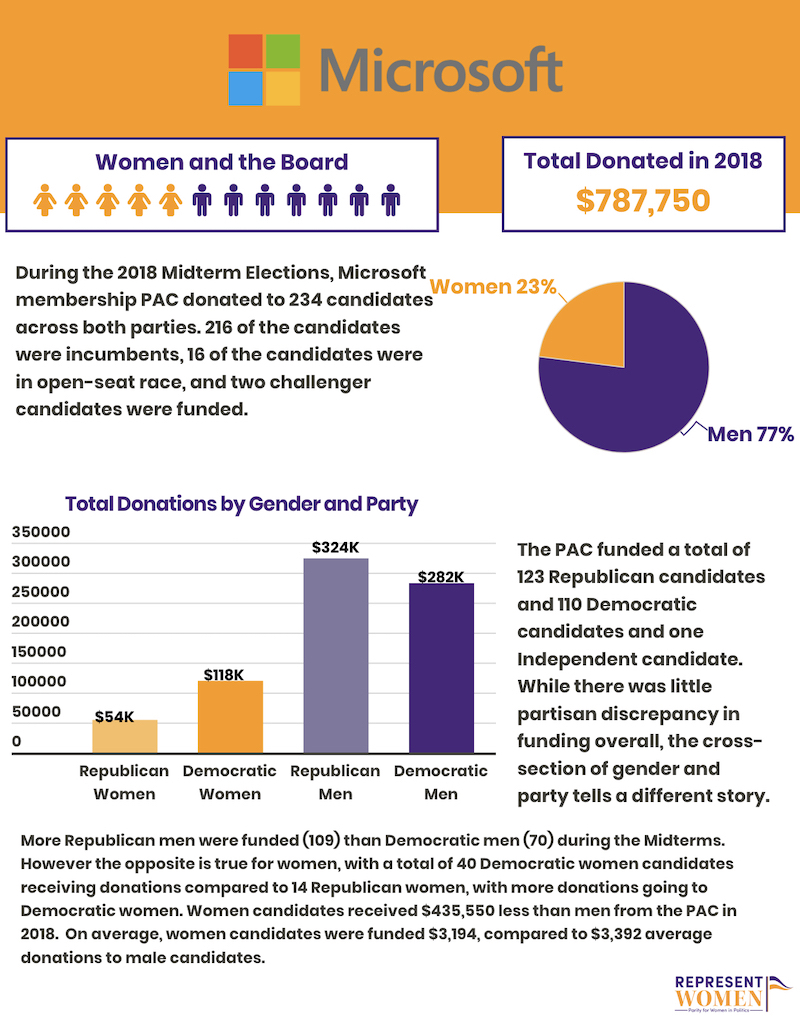
The team at RW has researched donor and PAC support for women candidates and created graphics, like the ones above and below, that illustrate the gender balance on PAC boards and the percentage of money that PACs have given to women candidates in previous election cycles. We have done this work because it is clear that gatekeepers and political parties have an enormous influence on who runs for office. This fascinating article in The Washington Post explores intentional strategies to ensure that women candidates are able to run and win at equal rates with men:
We studied the use of gendered financing in 31 national legislative elections in 17 countries. We found out which tools are most effective in correcting the underrepresentation of women, and what helps female candidates win.
When and how does gender-targeted campaign financing increase the proportion of women in office? We discovered two approaches.
In the first approach, independent groups — women’s groups, political action committees or parties — financially support female candidates’ campaigns, which also makes it cheaper for parties to back them in elections. In the United States, Emily’s List encourages women to run, vets them as candidates, donates directly to their campaigns and encourages its members to donate to these women independently. Justice Democrats is a group aimed at pushing the Democratic Party further left by funding working-class female candidates. In Japan, the WIN WIN! initiative copied the Emily’s List approach, intending to fight an old boys’ network through grass-roots support. In Ghana, political parties decided to charge women lower filing fees than men to enter their party primaries, to improve gender balance.
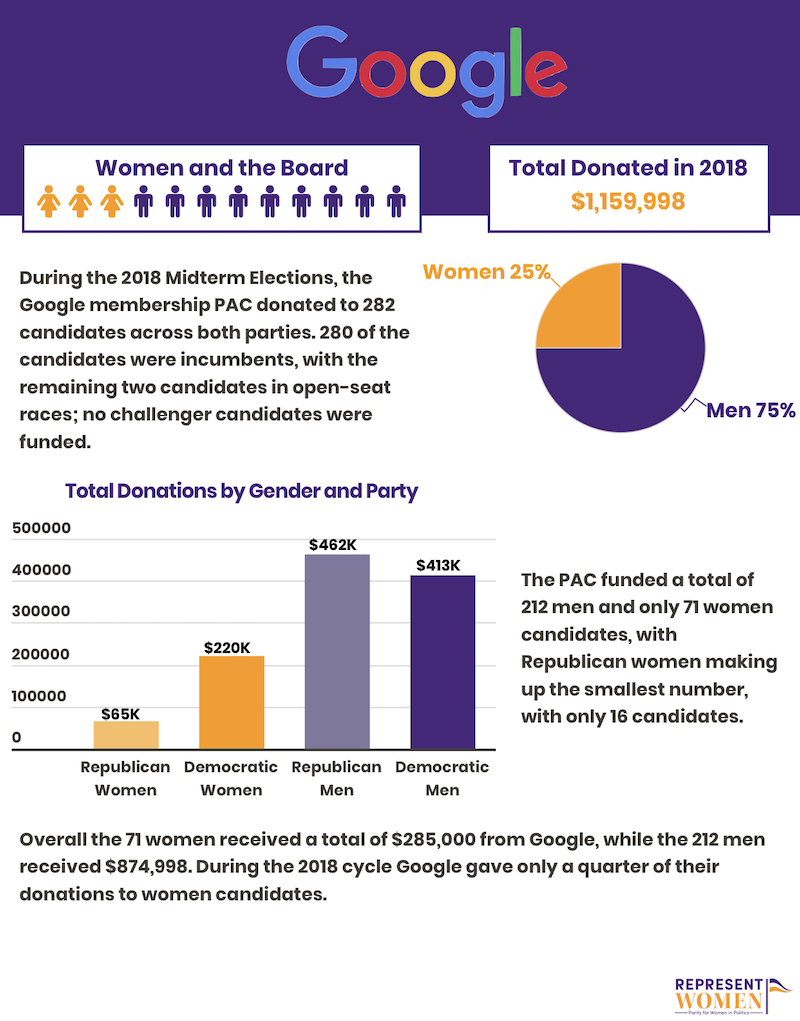
Second is “top-down” financing. Here, governments enact laws and regulations that reward parties financially for backing female candidates or penalize those that do not meet candidate gender quotas, which require parties to have at least a minimum proportion of female candidates. While these quotas do help women get elected, it is usually below the formal quota, given how complex primaries can be. Governments penalize parties that do not reach the quota. In France, Ireland and South Korea, governments impose fines on those parties; in Chile, the government rewards parties that succeed.
Here’s what these two approaches have in common: Some entity uses funding either to motivate more women to run for office or to convince parties that running female candidates won’t be more costly. We studied mechanisms that focus on parties because researchers have already found party backing is critical for winning political office and that backing is more important for women than for men.
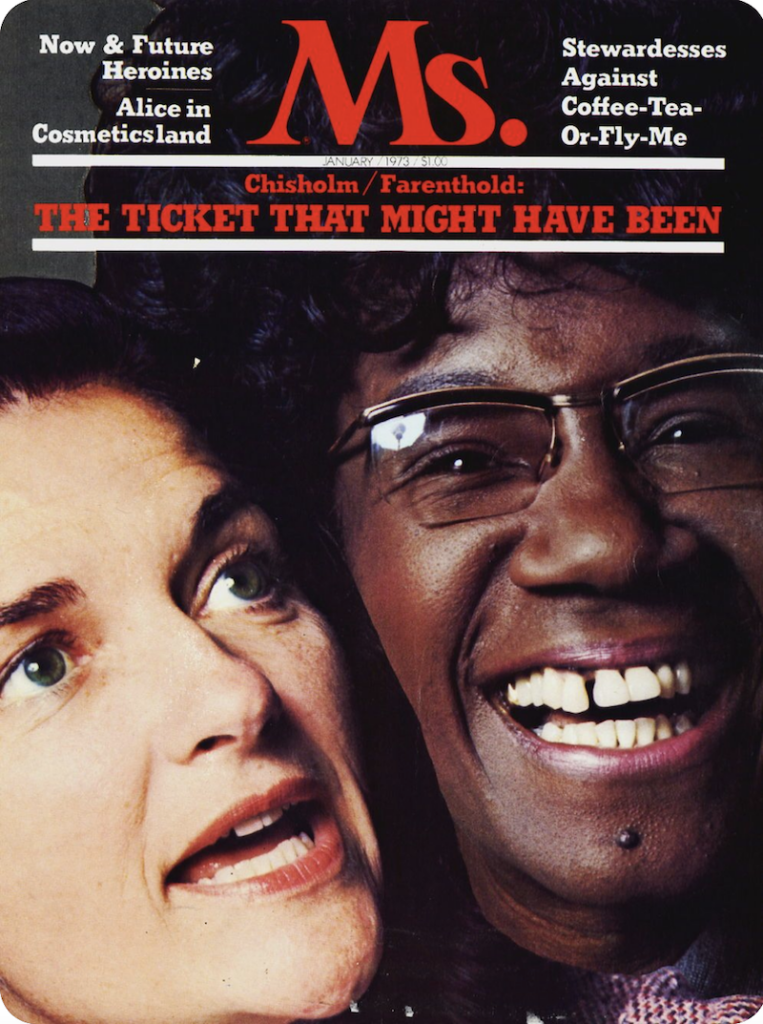
John Nichols wrote a terrific piece for The Nation on Sissy Farenthold, who died last week, and the presidential ticket that could have – and probably should have – included her in 1972:
The 1972 Democratic National Convention was a breakthrough moment for women in American politics. US Representative Shirley Chisholm’s groundbreaking candidacy for the presidency “as a Black person and as a female person,” which had been crudely dismissed by party power brokers, finally got its moment in the spotlight. With the collapse of Hubert Humphrey’s candidacy, many Black delegates who had been aligned with the former vice president shifted their support to Chisholm, giving her 152 votes for the nomination—far fewer than nominee George McGovern got, but far more than Maine Senator Edmund Muskie, who had once been the front-runner, and many of the other men who had bid unsuccessfully for the party’s nod.
An even larger vote to put a woman on the ticket came when the convention nominated a vice presidential candidate to run with McGovern in the fall against Republicans Richard Nixon and Spiro Agnew. McGovern, a senator from South Dakota, had tapped a colleague, Missouri Senator Tom Eagleton. But activists with the National Women’s Political Caucus, who had fought a bold yet ultimately unsuccessful fight to include an abortion rights plank in the platform, wanted to challenge the tradition-bound politics not just of the party but also of the nation. The plan was to nominate a woman and attempt to pull support from the camps of the various contenders for the presidential nod.
But who? Many activists wanted Chisholm to make the run, but she chose not to mount a second campaign in the same year. The only woman in the Senate at the time was Maine Republican Margaret Chase Smith. No woman, of either party, held a governorship. But one woman, Frances “Sissy” Farenthold, had just waged a headline-grabbing campaign for governor of Texas. A legislator who gained wide attention as one of the state’s leading reformers and an ardent backer of civil rights, labor rights, and women’s rights, Farenthold had finished ahead of the sitting governor and lieutenant governor in the initial 1972 primary for governor and gone on to win 45 percent of the vote in a runoff result that made her a national star for feminists and their movement allies…
Politically savvy and exceptionally courageous, Sissy Farenthold had a reputation as a progressive who got to the point, and she did just that in announcing her vice presidential bid only hours before the 1972 convention was to pick a nominee. Noting concerns about whether a McGovern-led ticket could beat Nixon, she declared, “One avenue open to victory is unique to my candidacy. As a woman, I alone could appeal to the women of all parties. By November 1972, the women voters of this country will outnumber the men by a margin of 8 million votes. Women will probably remain the voting majority for the rest of the century. I believe it is time this majority has representation at all levels of government, including the Democratic Vice-Presidential nominee.”
Farenthold was right.
McGovern was a principled, anti–Vietnam War liberal with an impressive record on economic, social, and racial justice issues, but conservative Democrats and the Nixonian penchant for smears and dirty tricks that inspired the Watergate scandal had already undercut him. He needed to do something dramatic to broaden the Democratic base. Some of the savviest thinkers and strategists in the party understood this, including Lawrence Goodwyn, the great theorist of grassroots activism, who signed on as Farenthold’s speechwriter, and economist John Kenneth Galbraith, who worked the Massachusetts delegation on Farenthold’s behalf.
Civil rights campaigner Fannie Lou Hamer agreed to deliver a nominating speech but fell ill, so Texan David Lopez agreed to read it. A McGovern delegate, Lopez told the convention, “A great American wanted to precede me to this microphone tonight to second the nomination of Sissy Farenthold, but though her heart is strong, her body has temporarily given her a little trouble. I refer to that courageous Democrat from the state of Mississippi, Fannie Lou Hamer.”
Hamer’s statement noted the endorsements Farenthold had received from civil rights and women’s rights activists and concluded, “If she’s good enough for Shirley Chisholm, she’s good enough for Fannie Lou Hamer.”
Former US representative Allard Lowenstein, a legendary figure in the party who made his name organizing anti–Vietnam War forces during the 1968 presidential campaign, delivered a nominating speech in which he argued that putting Farenthold on the ticket would allow Democrats to expand their base and “multiply” their forces for the fall campaign.
In the main nominating address of the night, Steinem told the delegates, “Unless you dare to give your vote and support [to Farenthold], you will have wasted an opportunity to tell the country what is different about the 1972 convention.”
The convention did not dare. Instead, the delegates nominated Eagleton, who was quickly forced off the ticket after it surfaced that he’d been hospitalized for depression. Former Peace Corps director Sargent Shriver replaced him, but the ticket went down to overwhelming defeat—carrying only Massachusetts and the District of Columbia.
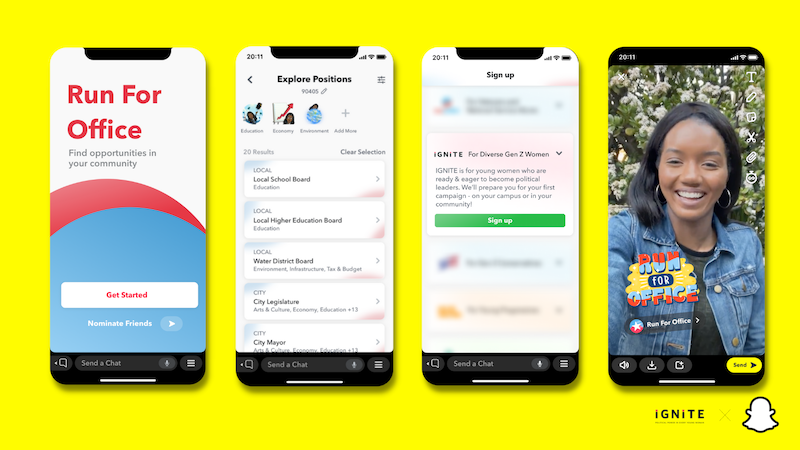
Snapchat launched a new program this week called Run For Office Mini which provides young women with the tools and resources they need to run for office – a number of our partner organizations were featured in the launch including: IGNITE, VoteRunLead, Running Start and Emerge America. This comes at a crucial time, according to Kristin Hayden “the press this past week has focused on the negative impact of the social media giants on young girls – here we finally have social media being used in this purposeful and impactful way.”
We know this next generation is the most diverse, yet currently only 6% of state legislators are under the age of 35. We hope our Run for Office initiative will help shape a more equitable, and reflective, democracy that includes all Americans, including young people.
This work builds on our efforts to help make it easier for Snapchatters to engage in their democratic processes through voting. Ahead of the 2020 US election, we launched a suite of voter engagement tools with support from TurboVote and BallotReady to help Snapchatters register to vote, understand their ballot, make a plan to vote, and learn about voter protection resources. As a result, we helped more than 1.2 million Snapchatters register to vote in that election — more than half of which were first-time voters. Our Run for Office Mini was designed to tackle common barriers that young people face when considering if they want to run for public office. It includes:
A centralized portal on local elected offices that can be filtered by issue. We created a one stop resource that curates over 75,000 upcoming elections on the federal, state and local level that Snapchatters may be eligible for. Snapchatters identify a set of issues they are passionate about and then we surface roles they may be interested in.
Access to experienced candidate recruitment organizations and training programs across the political spectrum. These groups will be connected directly with Snapchatters to help them with the first steps needed to start a campaign, and include: Emerge America, IGNITE, New American Leaders, New Politics, Run GenZ, Run for Something, Running Start, LGBTQ Victory Institute, Vote Run Lead, Women’s Public Leadership Network.
The ability to nominate friends to run for office. Snapchatters say friends were more than five times more influential in their decision to vote in the 2020 election vs. influencers and celebrities. The Run for Office Mini allows Snapchatters to nominate their friends who they see as future leaders.
A personalized campaign hub. The ‘My Campaign Dashboard’ will show Snapchatters the first steps they need to take to get on the ballot, including filing deadlines and signature requirements, as well as contact information for local election offices. In addition, Snapchatters will be able to share stickers from this portal to start campaigning on Snapchat with their closest friends.
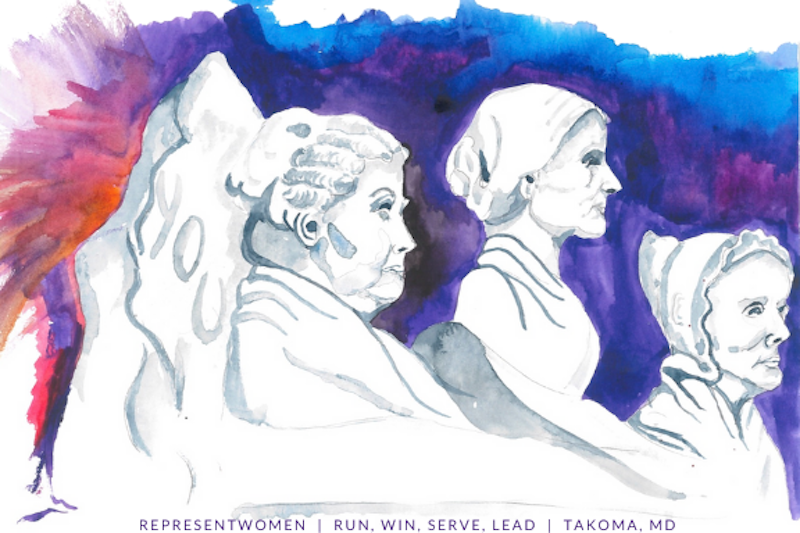
An audit of 50,000 monuments in the United States revealed that there are far more monuments depicting mermaids than women members of Congress according this sobering story in Quartz by Courtney Vinopal:
A new audit of nearly 50,000 different monuments throughout the US provides insight into how historic figures are memorialized in public spaces.
The research was conducted by Monument Lab, a Philadelphia non-profit, which found the landscape is dominated by white, male figures, and that you’re more likely to come across a sculpture of a mermaid than a US congresswoman. The project was funded by the Andrew W. Mellon Foundation, part of a $250 million initiative to “reimagine monuments” that was announced last year. Researchers with Monument Lab, which seeks to illuminate how symbols are connected to “systems of power and public memory,” combed through 48,178 records of publicly available data from sources such as the Smithsonian to complete the audit.
US monuments tend to memorialize white, wealthy men
The findings of the audit serve as a reminder that “you are far more likely to run into a symbol of war and conquest than you are to community building, public health, or education,” says Paul Farber, the director of Monument Lab and co-director of the audit.
Only five of the top 50 most common historic figures honored by US monuments were Black or Native American, including King, Harriet Tubman, and Sacagawea, who accompanied the explorers Lewis and Clark on their expedition of the American West. The audit documents 22 monuments to mermaids, but just two to US congresswomen—one for Texas representative Barbara Charline Jordan, and another memorializing New Jersey representative Millicent Fenwick.
Last week the news broke that Iceland had become the first country in Europe to elect a majority of women to parliament but after a recount, according to this article in the BBC, the percentage of women dropped – the number of women elected is still pretty impressive:
Iceland briefly believed it had made history by electing Europe’s first female-majority parliament – before a recount showed it had just fallen short.
Some 30 of the 63 seats (47.6%) were won by women.
But earlier results had showed women winning 33 seats (52%).
No European country has breached the 50% threshold, with Sweden coming closest at 47%, according to data from the Inter Parliamentary Union.
The results mean a further six women have been elected to Iceland’s parliament, but men still hold a majority of seats.
Unlike some other countries, Iceland does not have legal quotas on female representation in parliament, though some parties do require a minimum number of candidates be women.
Initially, the apparent female-majority in parliament was hailed as a landmark achievement.
“In a historical and international light, the most significant news is that women are now first time in majority in the Icelandic parliament, and a first in Europe. This is good news,” President Gudni Johannesson told broadcaster RUV before the recount.
Iceland has long been considered a leader in gender equality and was ranked the most gender-equal nation in the world for the 12th year running in a World Economic Forum report released in March.
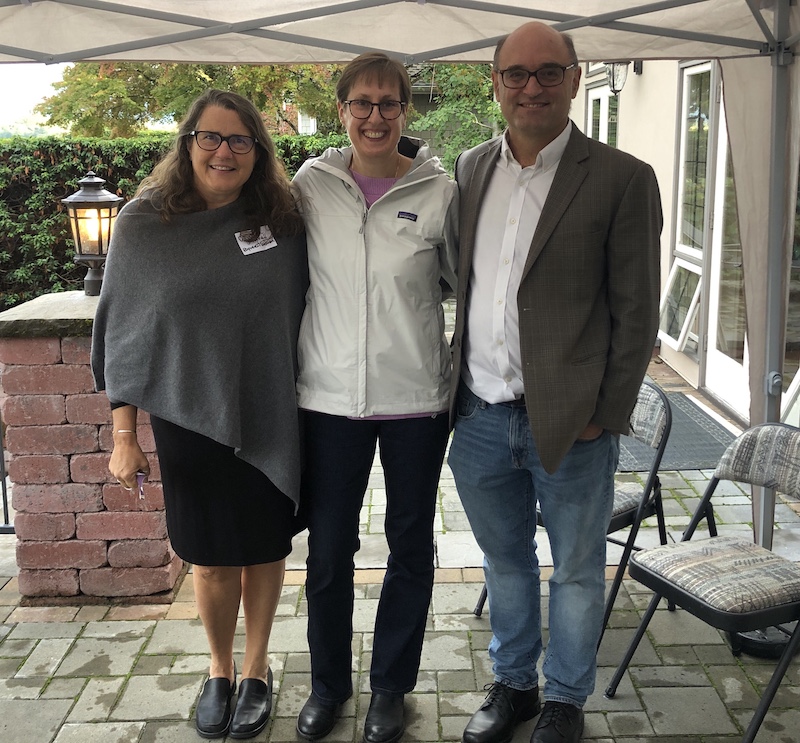
Last week I was in Seattle meeting with democracy reform and women’s representation leaders – it was great to spend time with Ruth Lipscomb who is running for Bellevue City Council among many others!


My husband Rob Richie spent part of his childhood on Mt. Rainier where his father was deputy superintendent – it was great to be there with him to see the majestic mountain and the moody fall colors.
That’s all for this week,
Cynthia
P.S. Don’t forget to check out this week’s suggested feminist reading:
